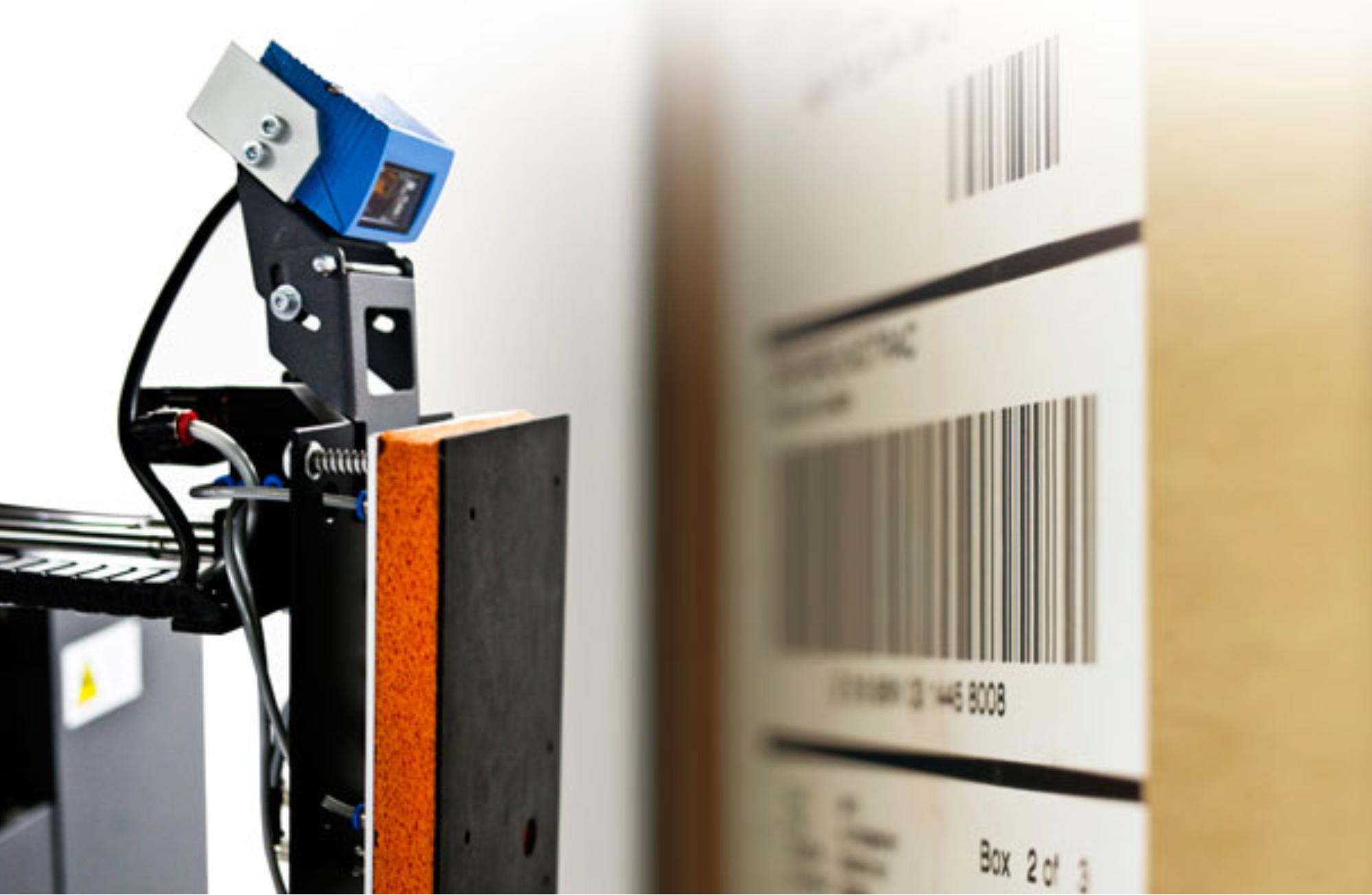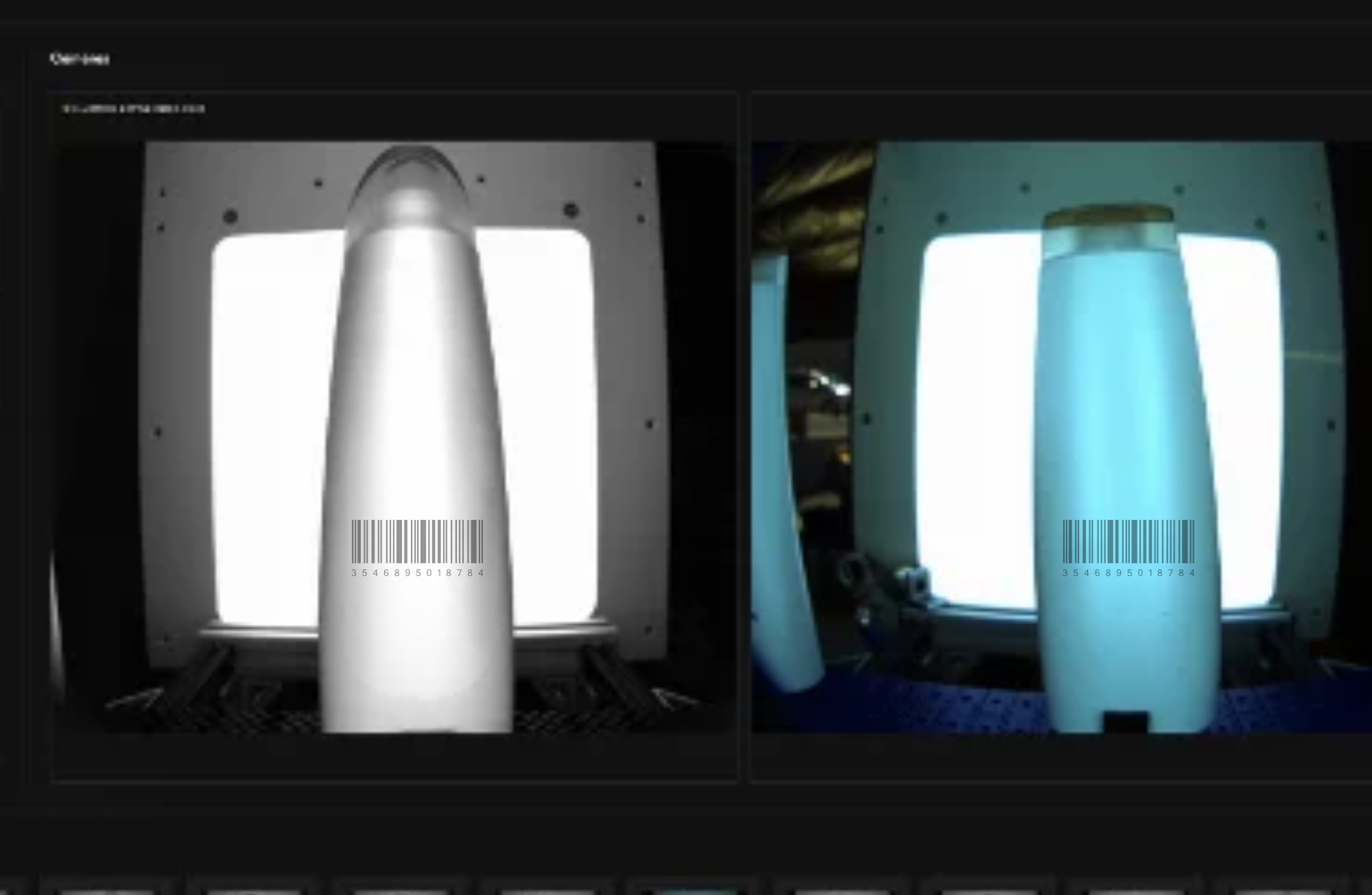How Machine Vision System is Transforming Automated Label Inspection
Published on: Apr 07, 2025

Written by: Content team, Intelgic
How Machine Vision System is Transforming Automated Label Inspection
In the contemporary landscape of manufacturing and retail, the automation of label reading through machine vision has emerged as a pivotal innovation. This technology enhances operational efficiency, ensures accuracy, and maintains compliance with industry standards. This comprehensive exploration delves into the significance, components, applications, benefits, challenges, and future prospects of machine vision systems in label reading.

The Importance of Automated Label Reading
Product labels are integral to manufacturing, logistics, and retail sectors, encapsulating crucial information such as barcodes, QR codes, expiration dates, batch numbers, and other textual or numeric data. Traditional manual methods of reading and verifying labels are susceptible to errors and can decelerate operations. Automating this process with vision systems offers several key advantages:
- Increased Speed: Automated systems can read labels in real-time, even on fast-moving production lines, without impeding the process.
- Improved Accuracy: Machine vision systems can accurately read small, intricate, or densely packed labels, reducing the risk of misreads or omissions.
- Consistency: Unlike human operators, vision systems can maintain consistent performance over extended periods, ensuring that every label is read and recorded correctly.
Enhanced Traceability: Automated label reading bolsters traceability throughout the supply chain by ensuring that every product is correctly identified and tracked.
Core Components of an Automated Label Reading System
An automated label reading system typically comprises several key components, each playing a vital role in the label reading process:
- Cameras: Capture high-resolution images of product labels.
- Lighting: Provides uniform illumination to ensure high-quality images.
- Image Sensors: Convert optical signals from the camera into digital data for analysis.
- Image Processing Software: Analyzes the captured image and extracts relevant information such as text, barcodes, and codes.
- Optical Character Recognition (OCR): Specialized software algorithms used to read and interpret textual information on labels.
- Barcode Readers: Recognize and decode 1D and 2D barcodes printed on labels.
- Software Algorithms: Handle various aspects of label reading, including alignment, verification, and validation.
The Process of Reading Labels Using Machine Vision
The process of reading labels using machine vision involves several steps:
- Image Acquisition: Cameras capture images of the product labels as they move along the production line.
- Preprocessing: The captured images are enhanced to improve quality, involving adjustments like contrast enhancement, noise reduction, and correction of geometric distortions.
- Segmentation: The enhanced images are analyzed to locate and isolate the regions containing the labels.
- Feature Extraction: Relevant features such as text characters, barcodes, or graphical elements are extracted from the segmented label regions.
- Recognition and Interpretation: The extracted features are interpreted using OCR and barcode decoding algorithms to retrieve the encoded information.
- Validation and Verification: The retrieved information is compared against expected values to ensure accuracy and compliance with standards.

Common Types of Labels Read by Vision Systems
Vision systems are adept at reading various label types, each serving distinct purposes across industries:
- Text Labels: Contain information such as product names, ingredients, manufacturing dates, and expiration dates. Optical Character Recognition (OCR) software is employed to interpret these textual details.
- Barcodes: One-dimensional (1D) codes representing data through varying widths and spacings of parallel lines. Commonly used for product identification and inventory management.
- QR Codes: Two-dimensional (2D) matrix codes capable of storing substantial information, including URLs and product details, accessible via scanning devices.
- Logos and Symbols: Brand logos, certification marks, and other symbols that may require verification for authenticity and quality control.
Challenges in Automated Label Reading
Despite the advantages, automated label reading systems face several challenges:
- Variability in Label Design: Differences in label layouts, fonts, and colors can complicate the reading process.
- Poor Print Quality: Smudged or faded prints can hinder accurate information extraction.
- Environmental Factors: Variations in lighting conditions and background noise can affect image quality.
- Label Placement: Inconsistent or incorrect label placement on products can lead to reading errors.
Solutions to Overcome Challenges
To address these challenges, several solutions can be implemented:
- Advanced Image Processing Techniques: Utilize algorithms that can adapt to variations in label design and compensate for poor print quality.
- Controlled Lighting Conditions: Implement consistent and appropriate lighting setups to minimize the impact of environmental factors.
- Robust System Calibration: Regularly calibrate vision systems to account for changes in label placement and ensure accurate readings.
- Machine Learning Models: Employ machine learning algorithms trained on diverse label datasets to improve recognition accuracy and adaptability.
Advantages of Implementing Machine Vision in Label Reading
Implementing machine vision systems for label reading offers numerous benefits:
- Quality Assurance: Ensures that only correctly labeled products reach consumers, maintaining brand reputation.
- Regulatory Compliance: Helps meet industry standards and regulations by verifying that all required information is present and accurate on labels.
- Cost Efficiency: Reduces labor costs associated with manual inspection and minimizes losses due to labeling errors.
- Scalability: Easily adaptable to different products and label types, facilitating scalability in operations.
Cameras and Image Sensors for Label Reading
Selecting appropriate cameras and image sensors is critical for the efficacy of a label reading system:
- Area Scan Cameras: Capture entire images in a single exposure, suitable for stationary or slow-moving products.
- Line Scan Cameras: Capture images line by line at high speeds, ideal for continuous processes like conveyor belts.
- Image Sensors: Convert optical images into electronic signals. High-resolution sensors enhance the ability to read small or complex labels.
Smart Cameras: Integrate image sensors and processing capabilities, enabling decentralized processing and reducing system complexity.
Lighting Systems for Label Reading
Proper illumination is essential for capturing high-quality images:
- Backlighting: Positions the light source behind the label, highlighting edges and contours, beneficial for transparent or translucent materials.
- Diffuse Lighting: Provides even illumination, minimizing shadows and reflections, suitable for glossy or reflective surfaces.
- Structured Lighting: Projects patterns onto the label to detect surface variations and enhance readability of embossed or engraved characters.
- Color Lighting: Utilizes specific wavelengths to increase contrast between the label and its background, aiding in distinguishing features.
Software for Reading Labels Using Machine Vision
Software plays a pivotal role in interpreting and processing label information:
- Optical Character Recognition (OCR): Converts different types of documents, such as scanned paper documents or images captured by a digital camera, into editable and searchable data.
- Barcode and QR Code Decoders: Recognize and interpret various barcode formats, facilitating rapid data retrieval.
- Image Processing Algorithms: Enhance image quality, correct distortions, and isolate regions of interest to improve accuracy.
- Artificial Intelligence (AI) and Machine Learning (ML): Enable systems to learn from data, improving their ability to recognize and interpret complex or varied label designs over time.
Best Practices for Implementing Automated Label Reading
To maximize the benefits of automated label reading systems, consider the following best practices:
- Define Clear Objectives: Establish what information needs to be captured and the desired outcomes to guide system design and implementation.
- Select Appropriate Hardware: Choose cameras, sensors, and lighting that align with the specific requirements of your application, considering factors like label size, material, and environmental conditions.
- Ensure Proper Integration: Seamlessly integrate the vision system with existing production lines and data management systems to facilitate smooth operations and data flow.
- Regular Maintenance and Calibration: Conduct routine checks and calibrations to maintain system accuracy and reliability over time.
- Staff Training: Provide comprehensive training for operators and maintenance personnel to ensure effective use and upkeep of the system.
- Pilot Testing: Implement the system on a small scale initially to identify potential issues and make necessary adjustments before full-scale deployment.
The integration of machine vision systems for automated label reading represents a significant advancement in manufacturing and retail industries. By enhancing speed, accuracy, and consistency, these systems contribute to improved operational efficiency, quality assurance, and compliance with regulatory standards. While challenges exist, ongoing technological advancements promise to further refine and expand the capabilities of machine vision in label reading, paving the way for more intelligent and automated production environments.

